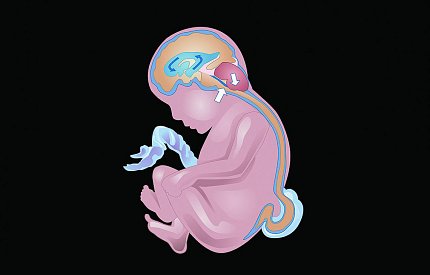Benefits of Fetal Surgery to Repair Spina Bifida Persist Through School Age

Photo: NICHD
Children as young as 6 years old who underwent fetal surgery to repair a common birth defect of the spine are more likely to walk independently and have fewer follow-up surgeries, compared to those who had traditional corrective surgery after birth, according to researchers funded by NIH. The study appears in Pediatrics.
The procedure corrects myelomeningocele, the most serious form of spina bifida, a condition in which the spinal column fails to close around the spinal cord. With myelomeningocele, the spinal cord protrudes through an opening in the spine and may block the flow of spinal fluid and pull the brain into the base of the skull, a condition known as hindbrain herniation.
In 2011, the Management of Myelomeningocele Study, funded by NICHD, found that by 12 months of age, children who had fetal surgery required fewer surgical procedures to divert, or shunt, fluid away from the brain. By 30 months, the fetal surgery group was more likely to walk without crutches or other devices.
For the current study, NICHD-funded researchers re-evaluated children from the original trial when they were 6 to 10 years old.
